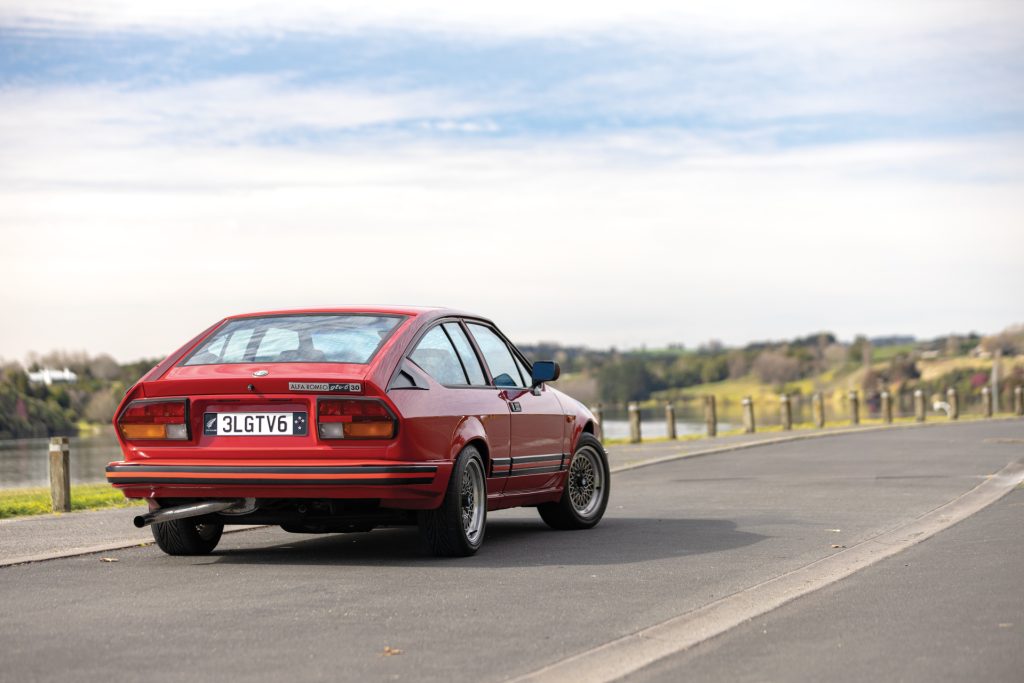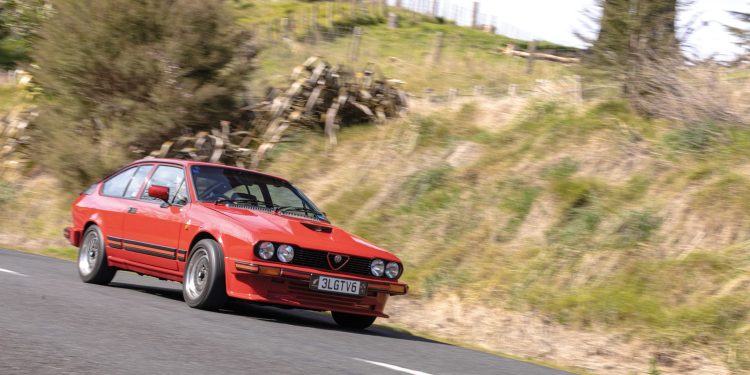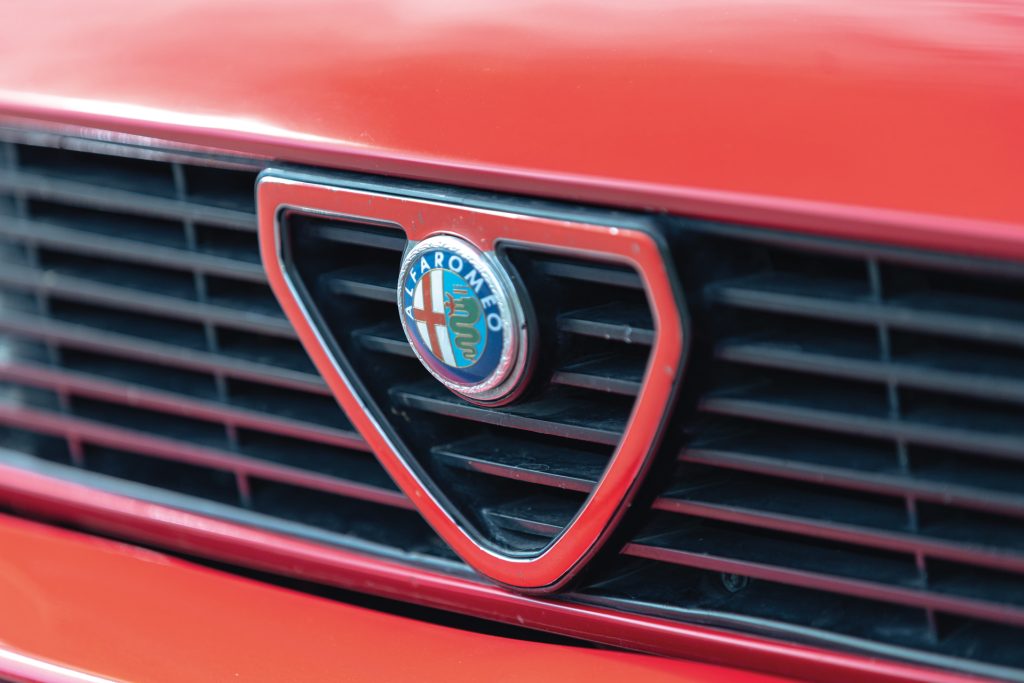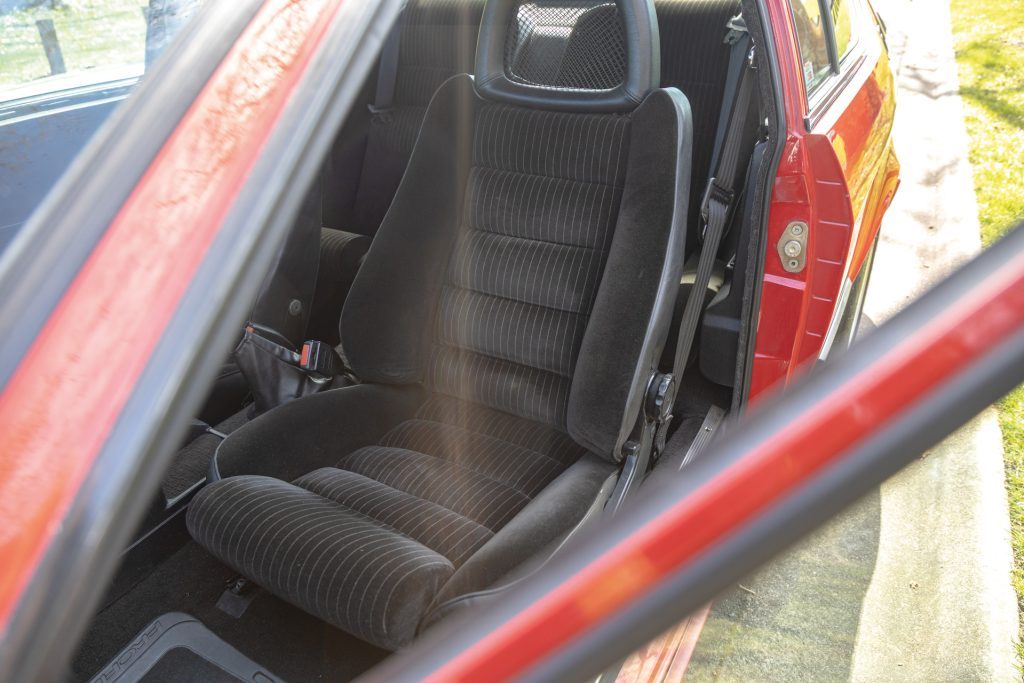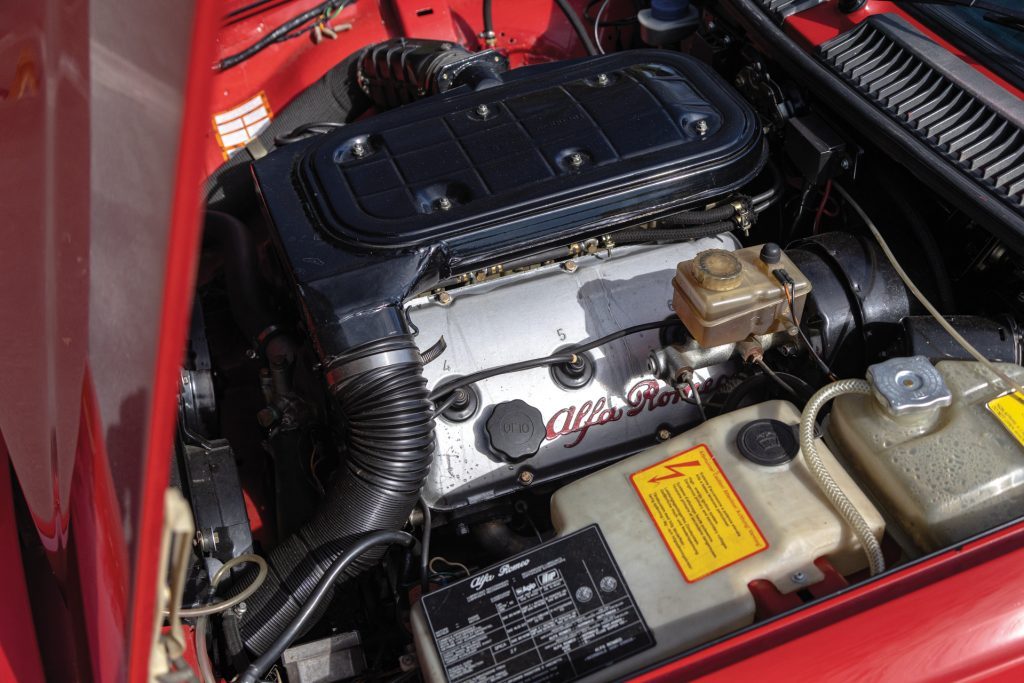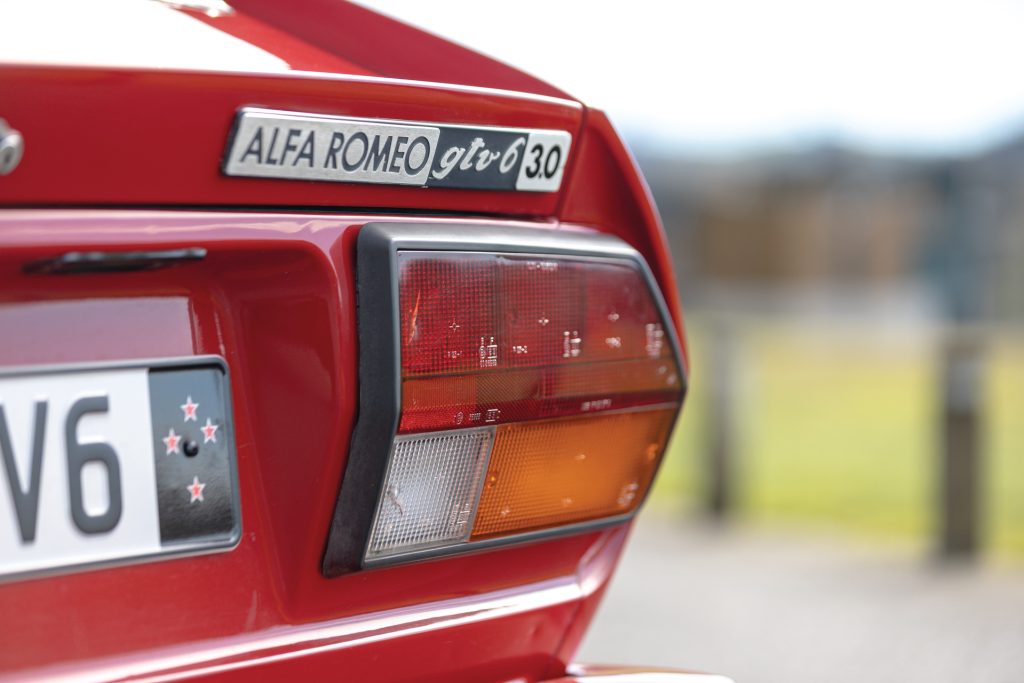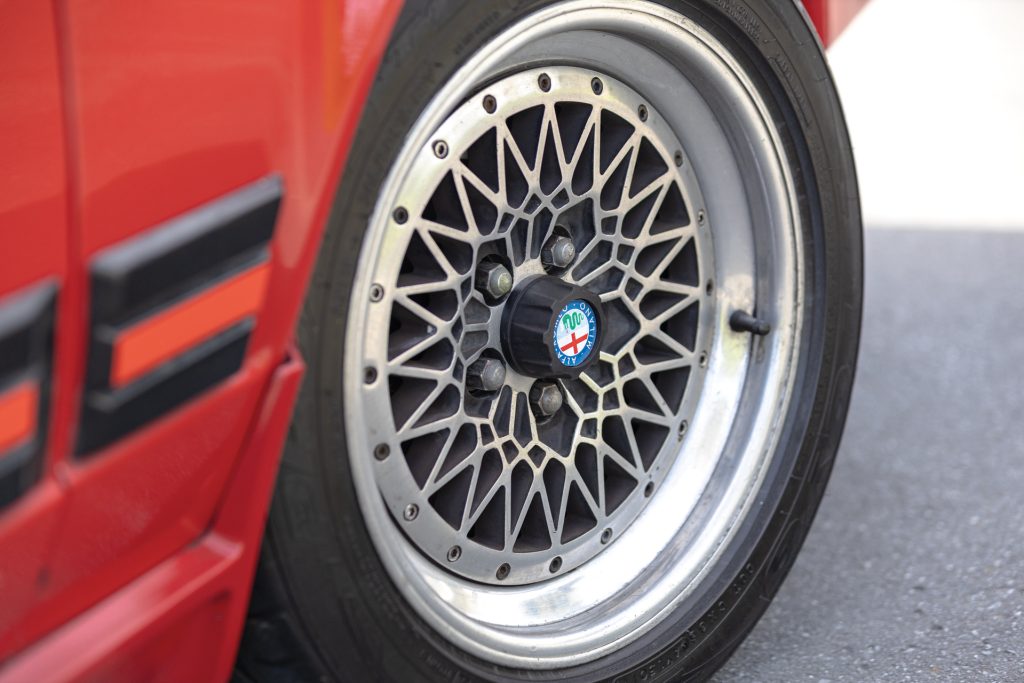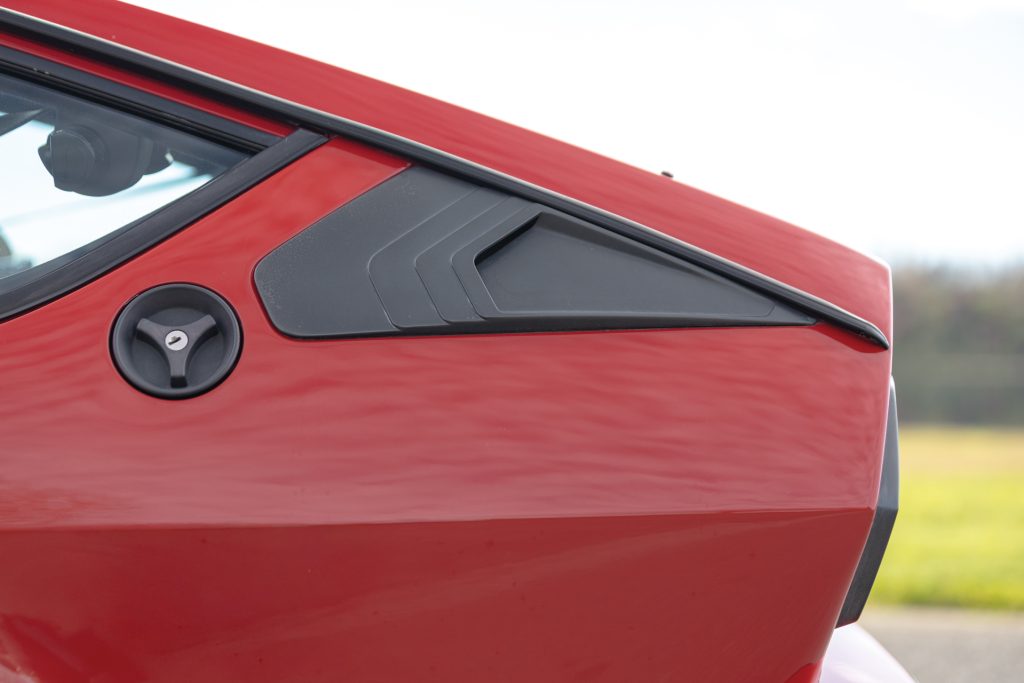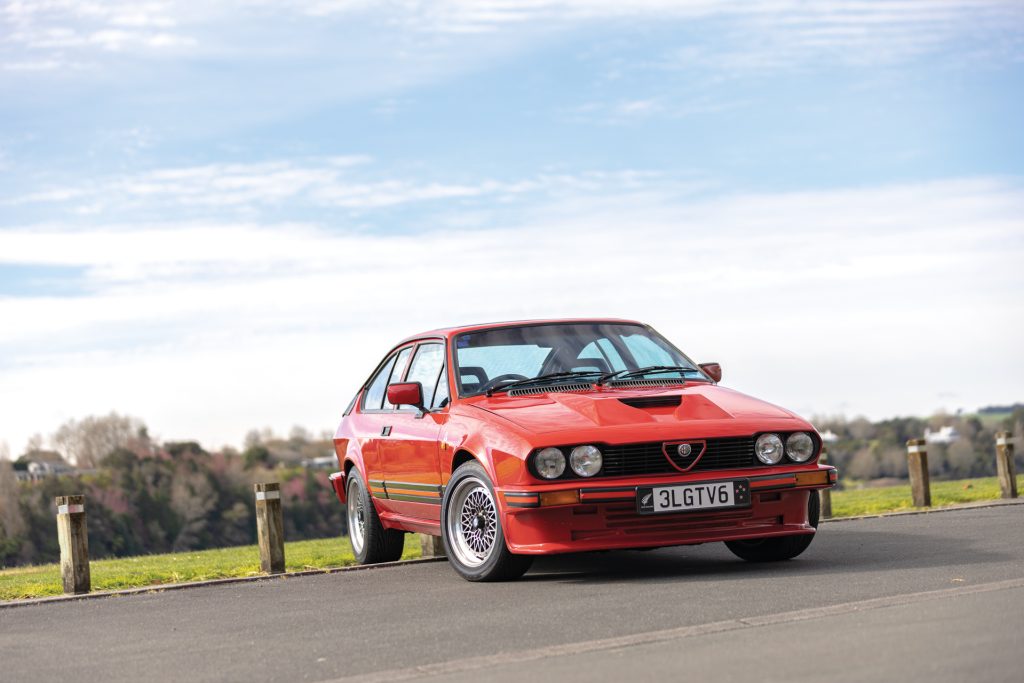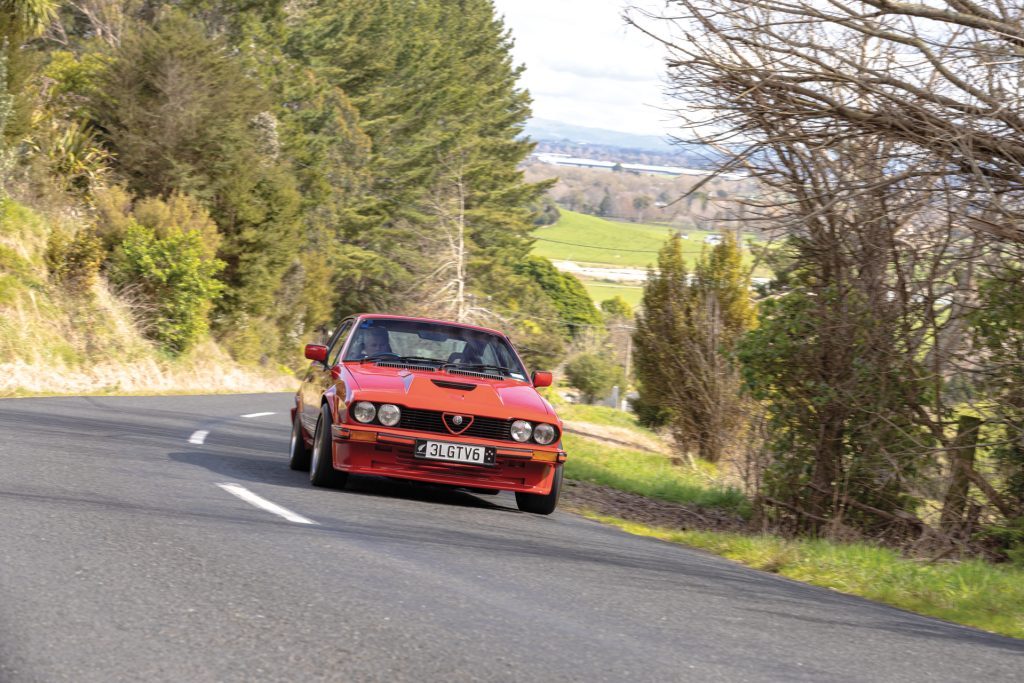1983 Alfa Romeo GTV6 3.0
Words: Kyle Cassidy | Photos: Alex Schultz
South Africa is known for its wildlife, and it’s also the birthplace of a wild Alfa Romeo. Here we tell the tale of the GTV6 3.0, a rare southern hemisphere homologation special.
There’s nothing quite like a homologation special. While some differ subtly from their garden variety brethren, with most of their motorsport magic hidden under sheetmetal, it’s hard not to spot what makes this Alfa Romeo GTV6 stick out from lesser models. If you still haven’t guessed, it’s that bonnet bulge and deep front splitter that give this Alfa a more menacing look than its more delicate Alfetta origins.
Said Alfetta was introduced in 1972, dressed in typically elegant Italian sheetmetal. Available initially as a four-door saloon, a couple of years later Italdesign’s Giorgetto Giugiaro would drape a more dramatic fastback two-door coupe over the same mechanicals. What made the Alfetta and the subsequent GT and GTV coupes stand out was their sorted dynamics.
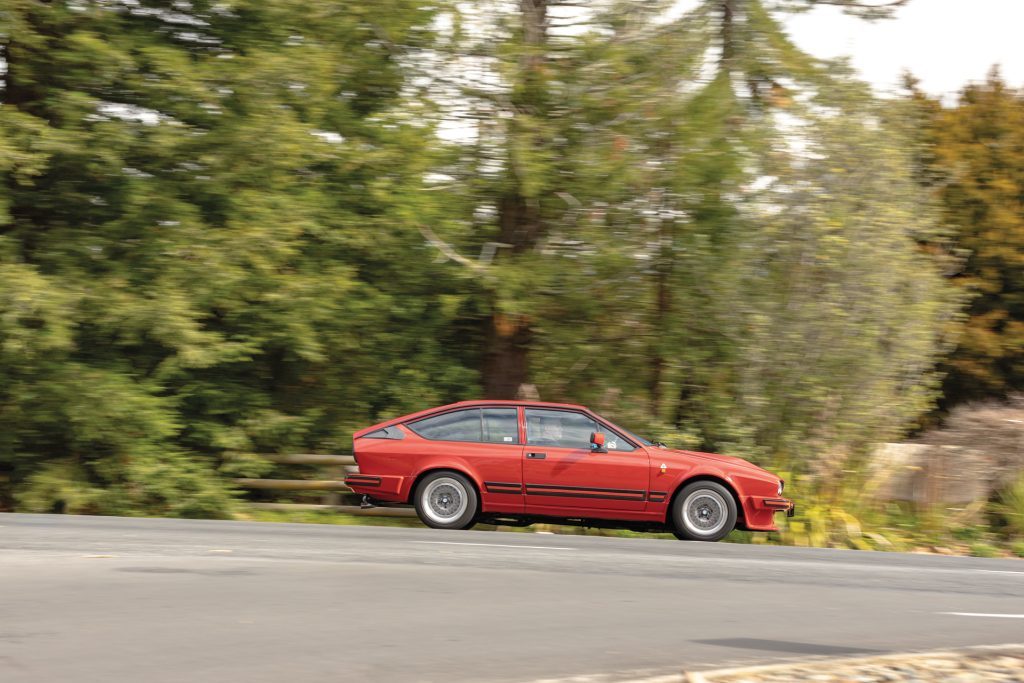
Using a longitudinally-mounted engine up front sending drive to the rear, Alfa Romeo did a little more to ensure an even better weight balance. The car featured a rear transaxle, while suspension was by way of a De Dion tube with help from a Watt’s linkage. Up front, double wishbones were acted on by torsion bar springs. Big disc brakes featured all round, the rears mounted inboard to help reduce unsprung mass.
Initially the Alfetta range used various four-cylinder engines, but in 1980 the coupe GTV6 was introduced, sporting a 2.5-litre six cylinder. Borrowed from the more upmarket Alfa Romeo 6, the 2492cc, fuel-injected six made 118kW and 213Nm of torque. Endowed with a larger engine, the GTV6 bonnet developed a bulge in order for it to fit.
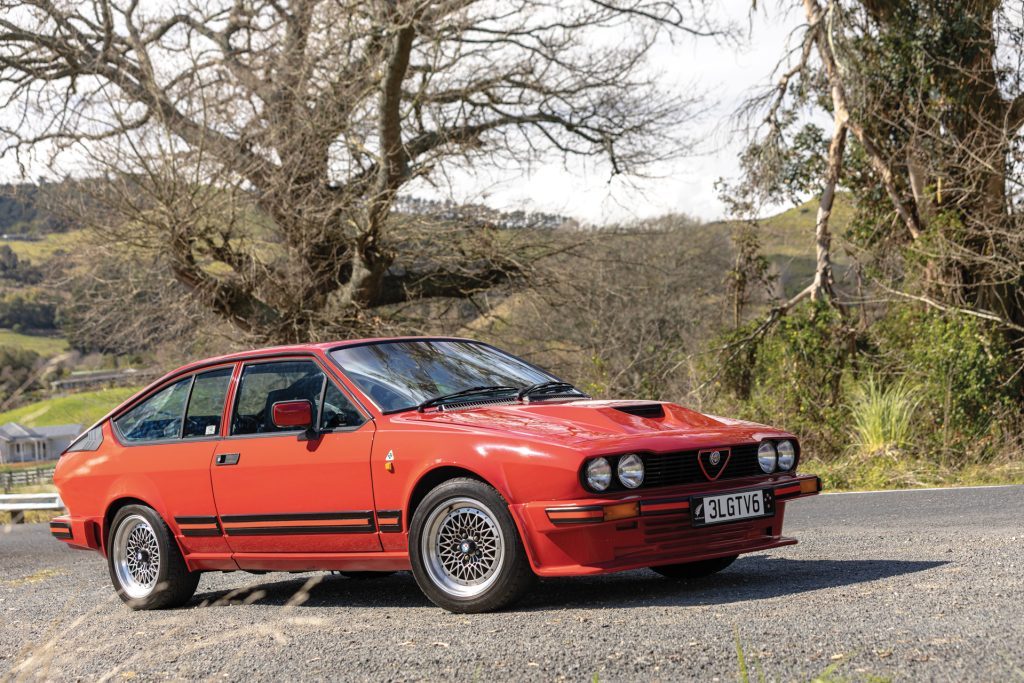
With a decent engine in a dynamic, well-balanced package, the Alfa Romeo GTV6 proved to be a handy performer on the European Touring Car scene.
In 1983, Andy Rouse won his second BTCC crown behind the wheel of the GTV6, while it claimed four successive European Touring Car titles in 82-85.
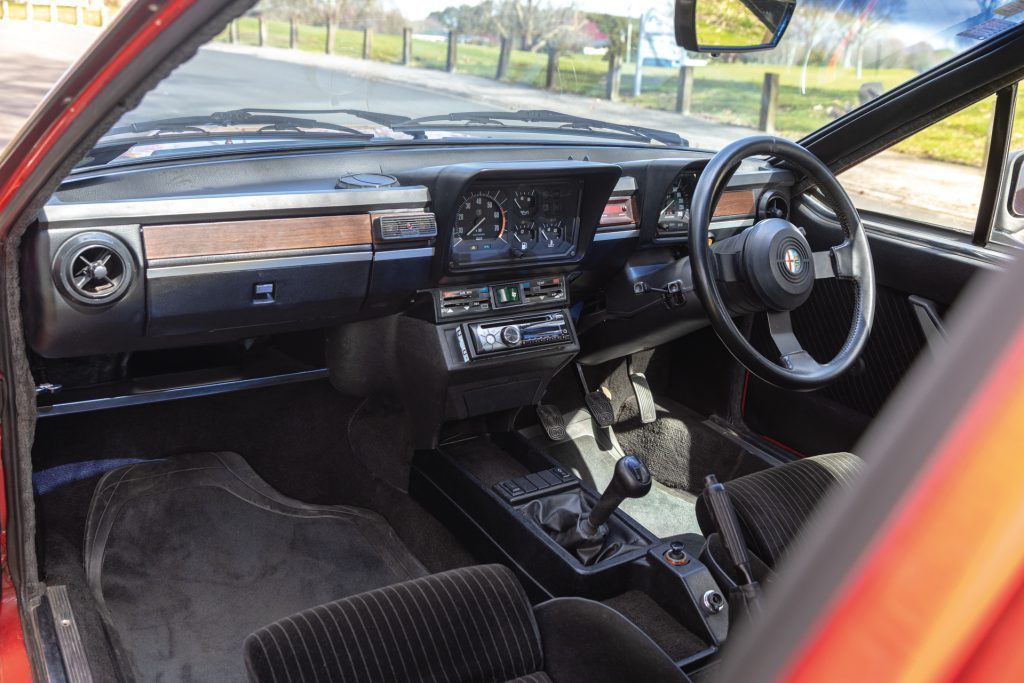
The South African hot rod
While the GTV6 was enjoying a winning time in Europe, in the South African championship, it was having trouble keeping up with the more powerful BMW 535i, especially on the circuits with longer straights. It simply needed more grunt to keep up with the Bavarian bully. And a few more cubes would be the cure.
As the Alfa Romeo was made in South Africa at the time, a factory backed hot rod job could be carried out with a little help from Autodelta, Alfa Romeo’s official competition department. The Italians sent its African outpost a shipment of cylinder head castings, crankshafts, special pistons and larger valves to enable Alfa Romeo South Africa to make a 3.0-litre V6 engine. While the components came from Italy, the assembly work was carried out in South Africa, including the machining of the 2.5-litre donor engine’s block and cylinder head, and the fitting of a unique flywheel.
Apparently the Alfa engineers focused on developing more torque than top end power, though the increase in capacity did yield more horses too, with the 2934cc V6 making in the vicinity of 137kW with 222Nm of torque. While the 2.5 made use of fuel injection for improved reliability and emissions, the 3.0-litre reverted to six Dellorto RFP40 carburettors, rechoked and rejetted to suit. However, these added to the engine’s overall height, requiring a unique fiberglass bonnet to be constructed by a South African firm. While it is blanked off on the road car, the large NACA duct in the middle was used on the race cars to feed the carbs. The other addition to the 3.0 model was the deeper front spoiler complete with more ducting for the radiator.
The five-speed transmission’s ratios remained unchanged, but as the 3.0-litre car used wider 15-inch Compomotive rims with lower profile tyres, the overall gearing was effectively lower. This helped with acceleration, and the 3.0 was able to run to 100km/h in 8.3sec, around 2.5 seconds faster than the standard 2.5. And with a higher 7000rpm redline, the 3.0-litre managed to clock 224km/h in a straight line.
To be eligible for racing, Alfa Romeo had to make at least 200 examples. The 3.0 model was produced from 1983 to 1985, 212 built in total.
With an impressive power to weight ratio, confidence-inspiring dynamics and strong braking performance, the GTV6 3.0 racer was a winning formula. It won on debut at Kyalami in 1983 and finished 1-2 in the Group One class at the three-hour race at Killarney, while going on to win the championship the next year.
The Kiwi connection
Of the original 212 built, it’s thought that around 70 or so still remain. Most still reside in South Africa but there are a few scattered about the globe owned by Alfa aficionados. This red GTV6 3.0, number eight in the build line-up, now calls Cambridge home. It is owned by Shaune Carruthers. Originally from South Africa he was a regular at the track during the GTV6’s prime.
“My dad was the motorsport manager for Nissan, so I’d go with him and watch the racing. But all I cared about was the Alfas.
“I remember the 2.5s used to run circles around all the cars in the tight bits but down the straight it ran out of legs. When the 3.0-litre came along, it cleaned up.
“The guys that drove them were maniacs. Super quick and mad. They were legends. And I always wanted one of those 3.0-litre cars.”
When new in South Africa, they were pricey at 29,950 Rand. As Shaune says “At the time, you could buy a nice Merc for less. And it was way out of my reach.”
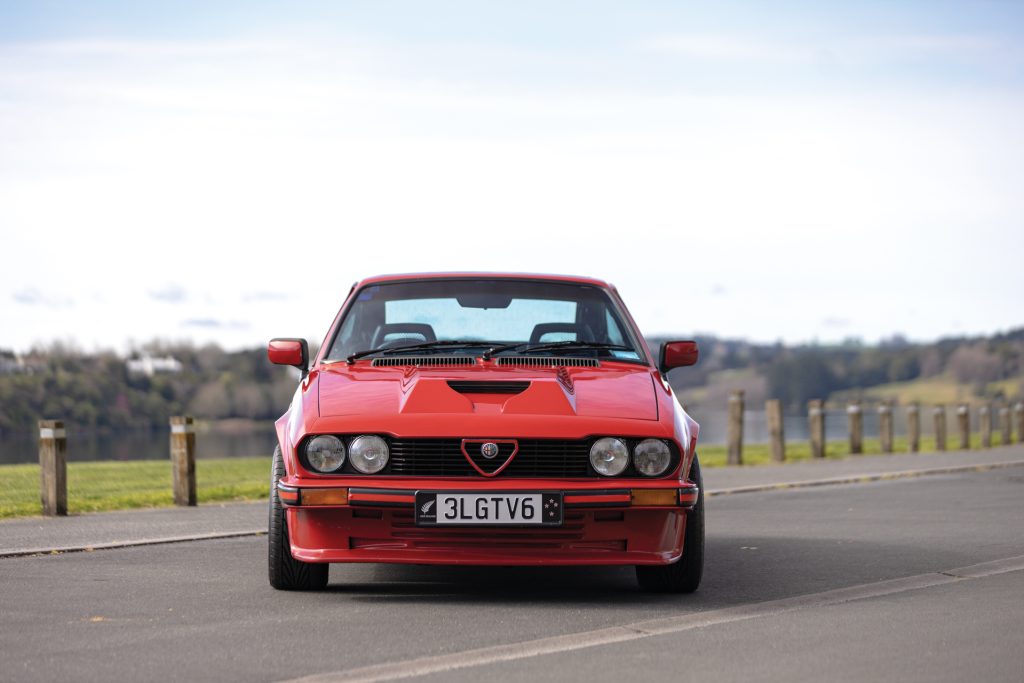
While he has owned multiple Alfas over the years, including different Alfettas and 33s, Shaune always said he’d one day own the GTV6 3.0.
“My wife has heard me talk about these cars for years. Every time I see a picture, I would talk about wanting one.”
About five years ago, his wife said she had seen a 3.0 for sale in the UK on the web. “I had seen it too, but the price was quite high and I told myself no. But it was a beautiful one.”
The story goes that it was originally owned in South Africa by a doctor, who then took it with him when he moved to the UK. But as he got older and found it harder to drive, he had traded it on a new Alfa Romeo.
Shaune said the dealer had contacted him about it. “He knew me from various Alfa groups, and he emailed to say if you’re looking for a really good one, this is the one. He offered it to me before putting it online, but I said no.”
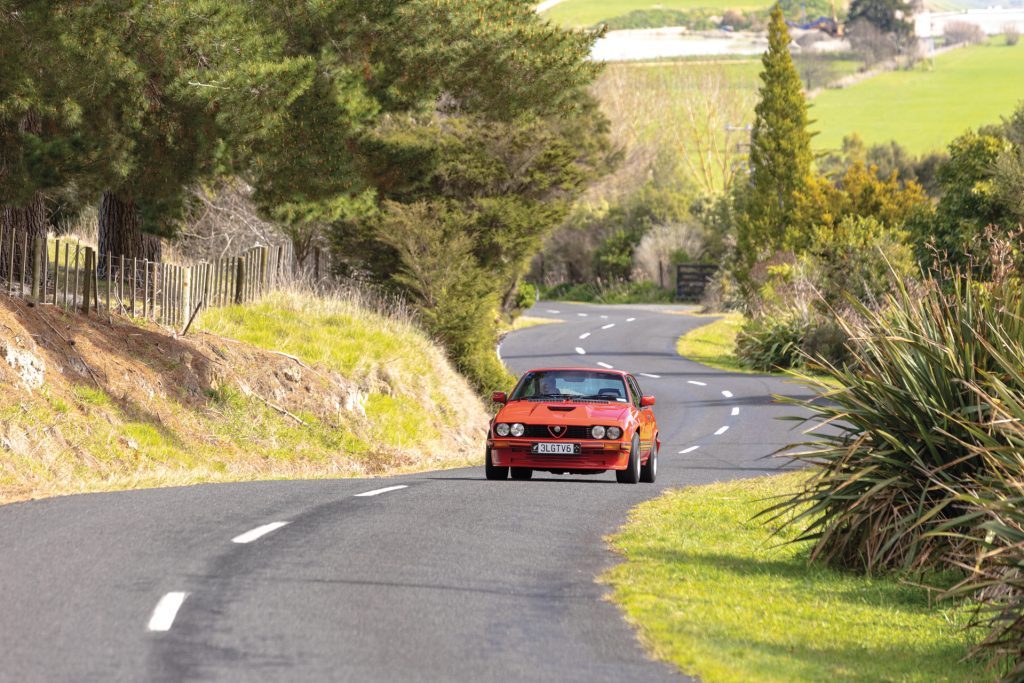
But then a few days later the story took an unusual turn of events.
“One night, my wife, who had a few whiskeys, was online, and she said look, the car is still for sale. She said she was sick and tired of hearing my stories about wanting one. Let’s just buy it, she said. And she did. So I was kind of committed then.”
Shaune has owned it for five years now, and it has done 64,000 miles. And so having wanted one for so long, was he genuinely happy when he got it? “My wife took a photo of me when it finally turned up. The look on my face was priceless. I was ecstatic. I just stood there looking at this 80s dream. And of course, it wouldn’t start because the battery was dead.”
It’s a rare Alfa here, the only one of its kind in New Zealand. Apart from some spacer issues on the front hubs to get it complied, Shaune hasn’t needed to rectify anything on it. And it’s rust free, a rarity for an Alfa of this ilk; many of the 450,000 Alfettas made over its 12-year production run have since disintegrated.
While he’s had offers on it, he has no intention of selling his dream. “I’d get more money if I sold it in South Africa, where people can pay a million Rand, which is more than $100k New Zealand.”
Shaune is always on the lookout for spares. He has another set of carbs for it, a cam, brakes and things like that. He says the guy who originally made the bonnet in South Africa is still around, if he ever needs another.
“It’s good to have them, if I ever did sell it, which is never going to happen.”
